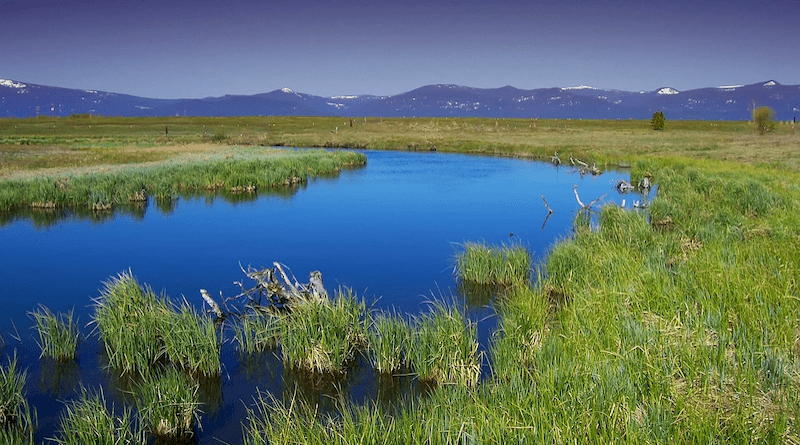Tribal Water Rights Underutilized In US West
A new North Carolina State University study shows that Indigenous groups in the western United States are – for various reasons – having difficulty turning water they have a legal right to, under water rights settlements, into actual water that can generate revenue through leases to other groups or through direct uses such as agriculture.
Western tribal water rights are a longstanding, yet underpublicized, component of a large and seemingly intractable problem: how to satisfy all water-rights holders when available water amounts are less than the paper water rights allotted. Drought and climate change threaten to exacerbate the problem.
The study used extensive satellite data to examine the effects of water-rights settlements on tribal land and water use on reservations over nearly 40 years, from 1974 to 2012. The findings show that tribes are likely using only a fraction of their entitled water rights, foregoing hundreds of millions of dollars – and possibly more than $1 billion – in revenue annually. Lack of irrigation infrastructure and convoluted land ownership issues likely represent the major impediments to tribes, the paper suggests.
“We wanted to know: After tribes settle their water-rights claims, do they actually get control over the water?” said Eric Edwards, assistant professor of agricultural and resource economics at NC State and corresponding author of a paper describing the research. “That is, do tribes actually get ‘wet’ water, and can it either be used on the reservation or in their control as a lease to others? Or is it just ‘paper’ water that the tribe isn’t able to use? Powerful interests in line for water behind tribes are likely already using the water. And tribes may not be able to divert the water for a variety of reasons.
“We also wanted to know is if these rights actually increased tribal water uses, like agricultural uses. We find that they do, but it’s a small amount. We found agricultural production increased by 8.7% in the studied period. But that amount is really small in the large land areas controlled by tribes.”
Issues with tribal water rights also reflect a sordid period of American westward expansion. After tribes were moved onto reservations without any water rights granted, beginning in the mid-19th century, a 1908 U.S. Supreme Court ruling, Winters vs United States, provided a legal avenue for tribes to assert claims to water. Since that time, some 20% of Colorado River water has been allocated to tribes, with other claims pending.
“While the tribes are sovereign and have legal claims to water, they must receive new water rights, which are allocated through states,” Edwards said. “But the Supreme Court decision doesn’t articulate how these claims should be settled. The federal government is responsible for providing these water rights, but the states have already allocated all the water to non-tribal users.”
Even after the rights are settled, it’s not clear the tribes actually receive the water. The researchers tackled the question of how much of the allotted water is actually used by tribes.
“Some tribes are leasing water and some are farming, but there’s a big gap between the paper water right and the estimated amount of water tribes are actually using,” Edwards said. “Our contention is that the water belongs to the tribes legally, but it’s being used – uncompensated – off the reservation by other groups.
“The tribes have secure legal title to the water, but establishing title isn’t enough to create the foundation for economic growth.”
So what is preventing tribes from converting “paper” water into “wet” water? The researchers point to three different impediments.
The first is whether tribal land has existing water infrastructure on it. Much of the tribal land does not have the necessary infrastructure, but in places where that infrastructure already existed, Edwards said, the tribes were able to divert water more easily after settlement.
The second impediment is that tribal land is held in trust by the federal government, and tribes have to get approval for many land-use decisions through the Bureau of Indian Affairs. This makes it virtually impossible for tribes to make certain decisions about the land, such as using it as collateral for loans.
Finally, tribes have to be explicitly granted the right by Congress to lease their water rights. And Congress has been reluctant to grant these leasing rights. Congressional approval is also needed to fund tribal rights settlements.
“Many Winters settlements have money for infrastructure in the agreement, but the money still needs to be appropriated by Congress,” Edwards said.
Researchers say that tribal water rights can fill gaps in regions where certain rights holders may be nervous about water availability, such as cities in the Southwest.
“We’re optimistic that tribes can serve to both solve some water shortfall issues and advocate for environmental uses of the water,” Edwards said.

